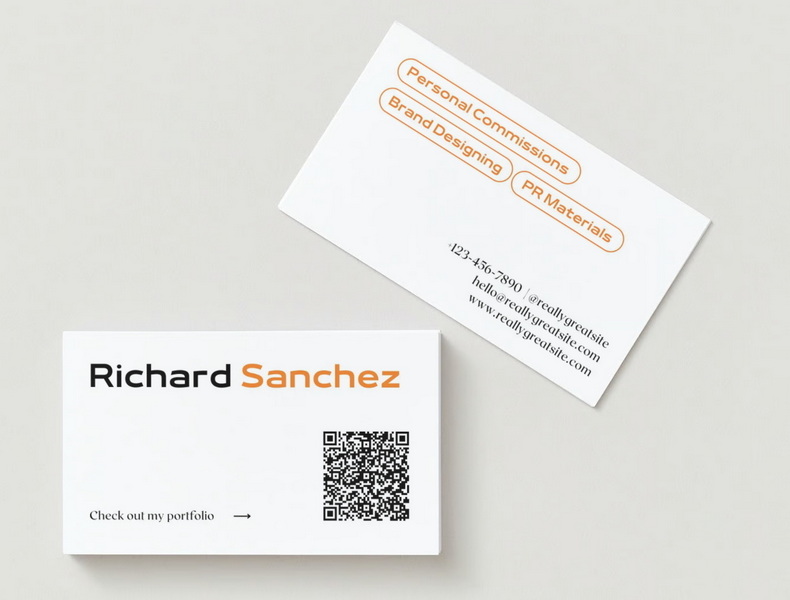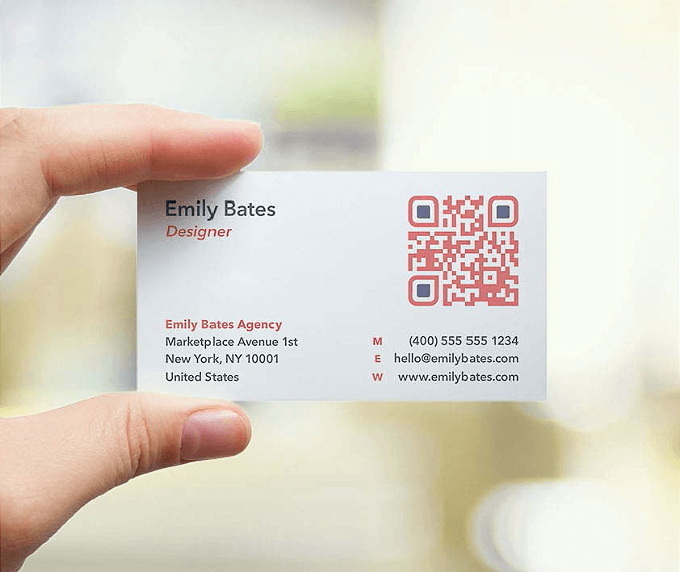Content Menu
● Introduction
● Step 1: Choose the Right Design
● Step 2: Select the Appropriate Size and Material
● Step 3: Include Essential Information
● Step 4: Use Readable Fonts and Colors
● Step 5: Add Unique Elements
● Step 6: Proofread and Print
● The Role of Business Cards in Networking
● Designing for Impact
● Digital vs. Traditional Business Cards
● Conclusion
● Related Questions
>> 1. What information should I include on my business card?
>> 2. How can I make my business card stand out?
>> 3. What are the standard dimensions of a business card?
>> 4. Should I hire a professional designer for my business card?
>> 5. Can I create digital business cards?
● Citations:
Introduction
Creating a business card is an essential step for professionals and businesses aiming to establish their identity and make a lasting impression. A well-designed business card not only conveys your contact information but also reflects your brand's personality and professionalism. In this comprehensive guide, we will explore the various aspects of designing and creating effective business cards, from choosing the right design to selecting the appropriate materials.

Step 1: Choose the Right Design
The design of your business card should align with your brand's identity. Here are some key considerations:
- Brand Consistency: Use your brand's colors, logo, and typography to maintain consistency. This helps reinforce brand recognition.
- Design Tools: Utilize tools like Canva or Adobe Spark to create professional designs. These platforms offer templates that can be customized to fit your needs.
- Visual Hierarchy: Ensure that the most important information stands out. For instance, your name and company logo should be prominent.
- Theme and Style: Consider the overall theme of your business card. Whether you're aiming for a modern, minimalist look or something more traditional, ensure that every element aligns with your brand's image.
Step 2: Select the Appropriate Size and Material
While the standard size for business cards is 3.5" x 2", you can opt for custom sizes to stand out. Consider the following:
- Material Choices: Options include matte, glossy, or textured finishes based on your brand's image. Thicker cardstock often conveys a sense of professionalism.
- Unique Shapes: Explore non-traditional shapes such as rounded corners or die-cut designs that can make your card memorable.
- Weight and Thickness: The weight of the cardstock can affect how people perceive your card. A heavier card feels more substantial and can enhance the impression you leave.
Step 3: Include Essential Information
A business card should include only the most critical information to avoid clutter. Key elements to include are:
- Your Name: Make sure it is clearly legible.
- Job Title: This helps recipients understand your role within the company.
- Company Name: Prominently display your company name alongside its logo.
- Contact Information: Include your phone number, email address, and website URL. If applicable, consider adding social media handles.
- Tagline or Slogan: A brief tagline can convey what your business does or its unique selling proposition.
Step 4: Use Readable Fonts and Colors
Choosing the right font and color scheme is crucial for readability:
- Font Selection: Opt for simple, easy-to-read fonts. Avoid decorative fonts that may be difficult to read at small sizes.
- Color Contrast: Ensure there is enough contrast between text and background colors to enhance readability. Stick to a maximum of two font styles for a clean look.
- Font Size: Ensure that the font size is large enough to be read easily; typically, no smaller than 8pt for essential information.
Step 5: Add Unique Elements
To make your business card stand out, consider incorporating unique features:
- QR Codes: Including a QR code can link directly to your website or portfolio, providing additional information without overcrowding the card.
- Embossed Text or Special Finishes: These tactile elements can create a memorable experience for the recipient.
- Creative Shapes or Designs: Think outside the box with die-cut cards or unusual layouts that reflect your brand's personality.

Step 6: Proofread and Print
Before printing, ensure all information is accurate:
- Proofreading: Check for typos, grammatical errors, and ensure all contact information is correct.
- Printing Options: Decide whether to print in-house or use a professional printing service. Professional services often provide better quality materials and finishes.
The Role of Business Cards in Networking
In today's digital age, many may question the relevance of business cards; however, they remain a vital tool in networking. Here's why:
- Tangible Representation: Business cards serve as a physical reminder of a conversation you had with someone. They create a personal connection that digital exchanges often lack.
- Ease of Sharing Information: Business cards provide an efficient way to share contact details without needing to write them down or rely on electronic devices.
- Professional Credibility: Having a well-designed business card conveys professionalism and seriousness about your work, enhancing your credibility in any industry.
- Expanding Your Network: By exchanging cards at networking events, you have opportunities to connect with others in your industry, potentially leading to new partnerships or clients[3][6].
Designing for Impact
To ensure that your business card leaves a lasting impression, consider these additional design tips:
- Use White Space Wisely: Allowing adequate white space on your card helps draw attention to key information and makes it easier for recipients to jot down notes if needed[5].
- Incorporate Testimonials or Reviews: Adding a brief testimonial from a satisfied client can enhance credibility and encourage recipients to reach out[1][2].
- Call to Action (CTA): Including a CTA encourages recipients to take action—whether it's visiting your website or contacting you directly[1][4].
Digital vs. Traditional Business Cards
While traditional paper business cards are still widely used, digital business cards are gaining popularity due to their convenience and eco-friendliness. Here's how they compare:
| Feature | Traditional Business Cards | Digital Business Cards |
| Physical Presence | Yes | No |
| Eco-Friendly | No | Yes |
| Cost of Printing | Varies | Generally low |
| Easily Updatable | No | Yes |
| Interactive Features | Limited | QR codes, links |
Digital business cards allow for easy updates without reprinting costs while offering interactive features like links to social media profiles or websites[9][10].
Conclusion
A business card is more than just a piece of paper; it's a representation of your brand. By following these steps—choosing the right design, selecting appropriate materials, including essential information, using readable fonts and colors, adding unique elements, ensuring accuracy in printing—you can create a business card that leaves a lasting impression on potential clients and partners.
Investing time in creating an effective business card is investing in yourself and your brand's future success. Whether you choose traditional or digital formats, ensure that each aspect reflects who you are as a professional and what you aim to achieve in your industry.

Related Questions
1. What information should I include on my business card?
Include your name, job title, company name, contact information (phone number, email), and website URL. Optionally, you can add social media handles and a tagline.
2. How can I make my business card stand out?
Use unique designs, high-quality materials, special features like QR codes or embossed text, and consider creative shapes or layouts.
3. What are the standard dimensions of a business card?
The standard size is 3.5" x 2", but you can choose custom sizes to differentiate your card from others.
4. Should I hire a professional designer for my business card?
If you want a unique and high-quality design that reflects your brand effectively, hiring a professional designer can be beneficial. However, many online tools offer great templates for DIY designs.
5. Can I create digital business cards?
Yes! Digital business cards are a modern alternative that can be shared electronically and often include interactive elements like clickable links to websites or social media profiles.
Citations:
[1] https://blog.hubspot.com/sales/how-to-design-business-card
[2] https://creativemarket.com/blog/10-commandments-of-business-card-design
[3] https://www.clickcardapp.com/blog/business-card-understand-create-with
[4] https://mayecreate.com/blog/what-to-put-on-a-business-card-plus-design-tips/
[5] https://www.indeed.com/career-advice/career-development/business-card-tips
[6] https://www.robinwaite.com/blog/the-role-of-business-cards-in-networking
[7] https://www.youtube.com/watch?v=JiBCYPAKydQ
[8] https://www.marion.com/6-steps-to-designing-the-perfect-business-card/
[9] https://wavecnct.com/blogs/news/why-business-cards-still-matter
[10] https://www.kneadmasters.com/blog/importance-of-business-cards
[11] https://graphicdesign.stackexchange.com/questions/830/making-a-business-card-any-advice
[12] https://www.brandly.com/blog/10-must-do-rules-for-designing-your-business-card/
[13] https://www.sitkins.com/blog/do-i-still-need-to-carry-business-cards
[14] https://en.99designs.de/designer-resource-center/designing-business-cards
[15] https://www.reddit.com/r/graphic_design/comments/18m8r6f/what_is_the_latest_design_trend_for_business_cards/
































